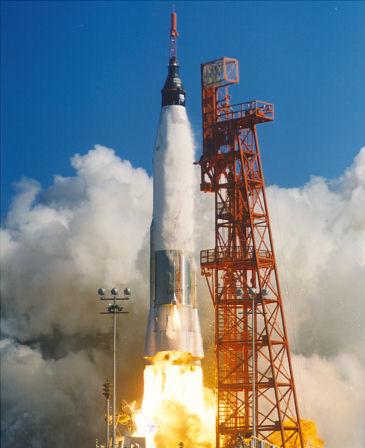MERCURY ATLAS FACT SHEET
By Cliff Lethbridge

Mercury-Atlas Launch, Photo Courtesy NASA
Classification: Space Launch Vehicle
Length: 95 feet, 4 inches
Diameter: 10 feet
Date of First Cape Canaveral Launch: July 29, 1960
Date of Final Cape Canaveral Launch: May 15, 1963
Number of Cape Canaveral Launches: 9
The Mercury-Atlas was essentially an Atlas D missile adapted to carry a NASA Mercury capsule. The engine thrusts were exactly the same as the operational Atlas D ICBM, with only the flight profile modified to carry the Mercury spacecraft into orbit. Additional safety features were built into certain Atlas D systems to protect the astronauts. Modifications included incorporation of an Abort Sensing and Implementation System (ASIS). ASIS was designed to protect the astronaut in case of an in-flight emergency. Other features included improvements in the rate gyro package, range safety system, autopilot, guidance antenna, propellant fill and drain valves, combustion sensors, liquid oxygen turbopump, missile skin width, guidance and engine alignment. On February 20, 1962 it was a Mercury-Atlas rocket that successfully boosted the MA-6 Friendship 7 capsule with John Glenn aboard. Glenn became the first U.S. astronaut to orbit Earth.


